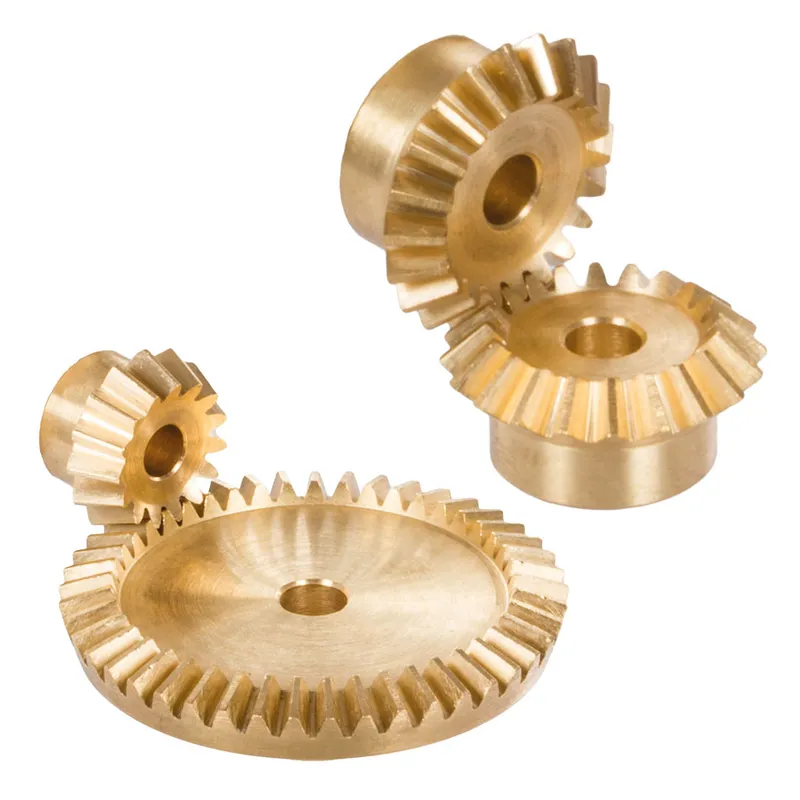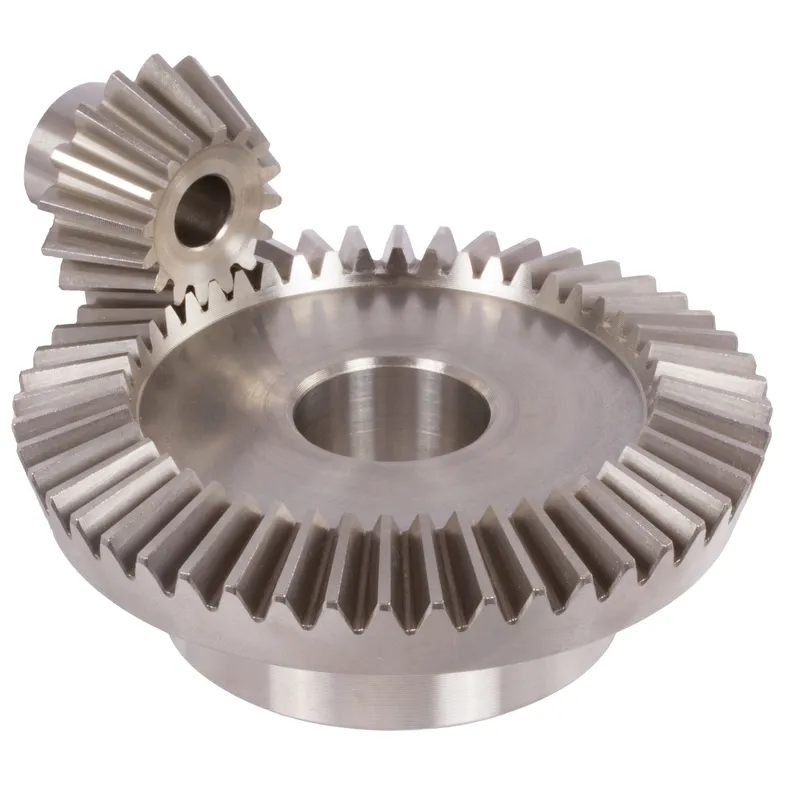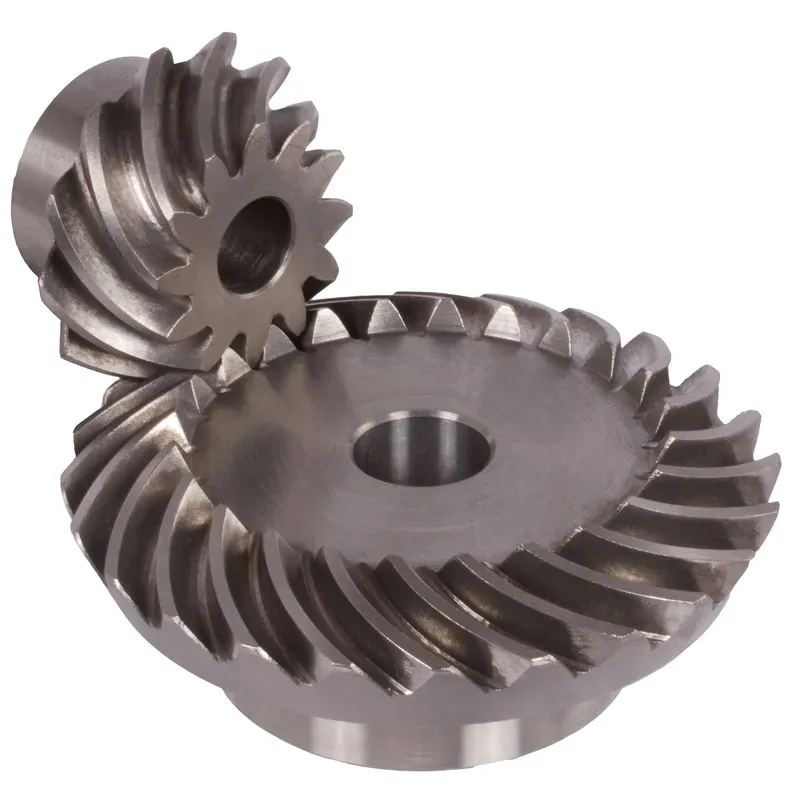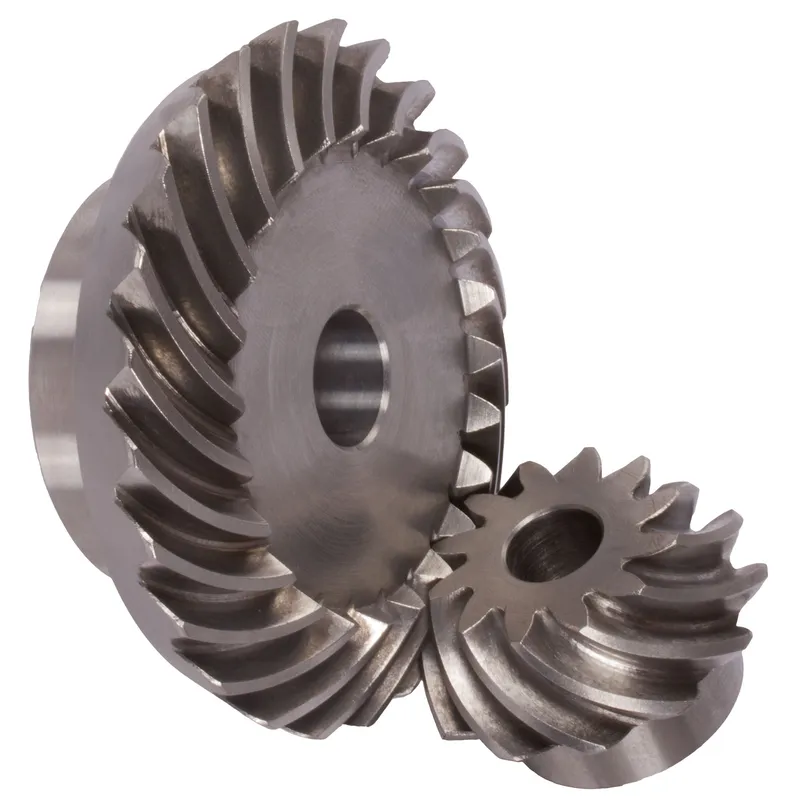Polyacetal Resin Plastic Bevel Gear Ratio 1.5:1 Straight Tooth System
The polyacetal resin plastic bevel gear ratio 1.5:1 straight tooth system is a mechanical component designed for power transmission between two intersecting shafts, typically positioned at a 90-degree angle. These gears are made from polyacetal resin; the straight-tooth design ensures simpler manufacturing, easier alignment, and smooth operation, though it is primarily used in low-speed or moderate-load applications. These plastic straight bevel gears are frequently employed in robotics, automotive systems, and industrial machinery due to their lightweight, durability, and efficient performance.
The polyacetal resin plastic bevel gear ratio 1.5:1 straight tooth system is a mechanical component designed for power transmission between two intersecting shafts, typically positioned at a 90-degree angle. These gears are made from polyacetal resin, a high-performance thermoplastic known for its excellent strength, low friction, and wear resistance, making it ideal for precision applications. The gear ratio of 1.5:1 indicates that for every 1.5 revolutions of the driving gear, the driven gear completes 1 revolution, providing a controlled speed reduction or torque increase.
The straight-tooth design ensures simpler manufacturing, easier alignment, and smooth operation, though it is primarily used in low-speed or moderate-load applications. These plastic straight bevel gears are frequently employed in robotics, automotive systems, and industrial machinery due to their lightweight, durability, and efficient performance.
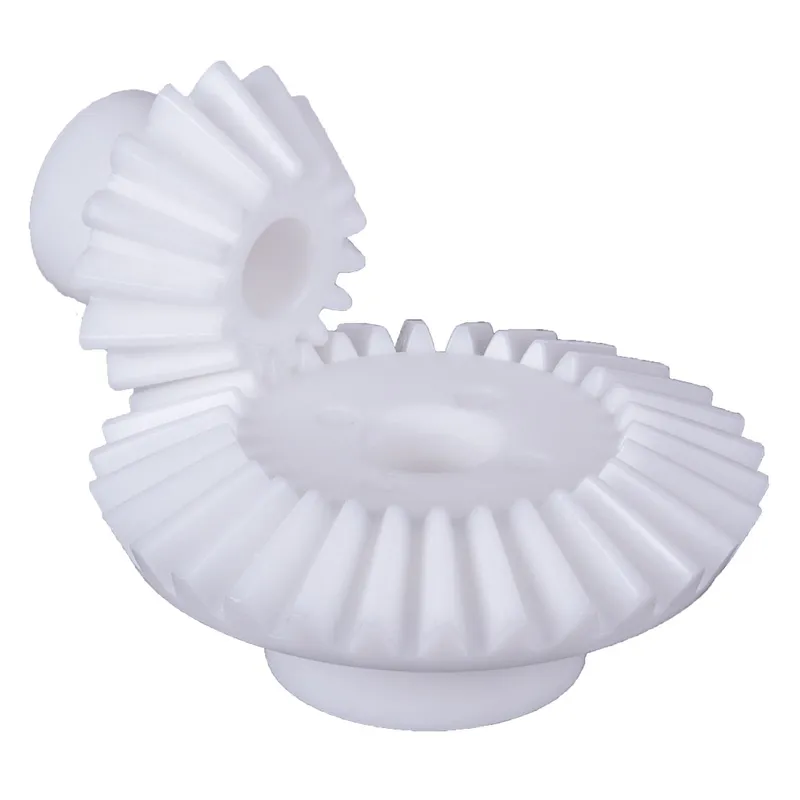
Polyacetal Resin Plastic Bevel Gear Ratio 1.5:1
 | 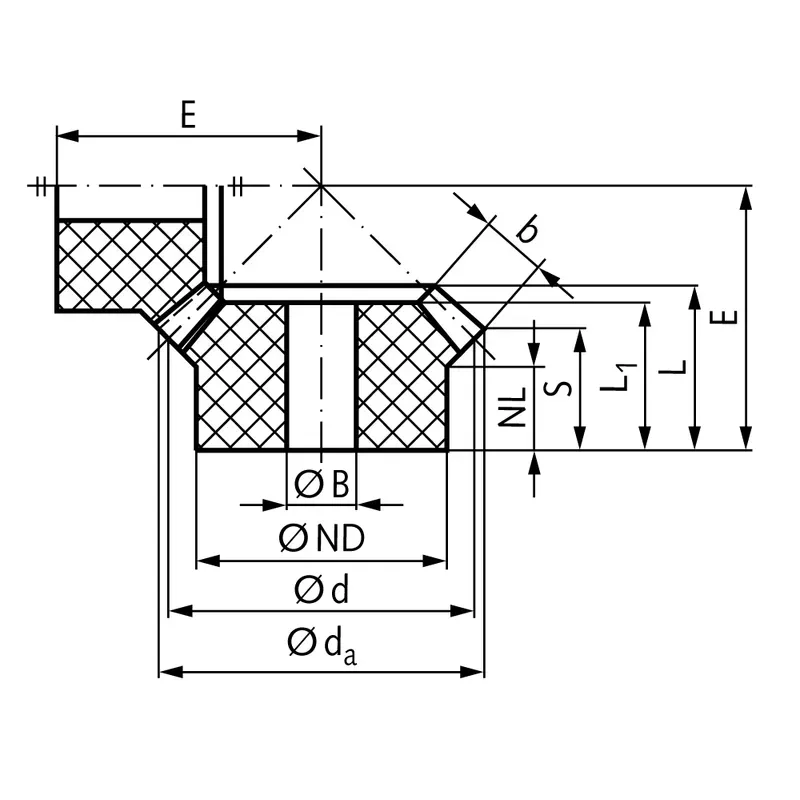 |
| Module | Number of teeth | da | d | ND | NL | L1 | L | S | b | B | E | Torque* | Weight |
| mm | mm | mm | mm | mm | mm | mm | mm | mm | mm | Ncm | g | ||
| 1,5 | 16 | 26 | 24 | 20 | 10,8 | 17,8 | 18,8 | 12,5 | 8 | 8 | 30 | 36 | 6,6 |
| 1,5 | 24 | 37 | 36 | 24 | 11,3 | 18 | 19,5 | 15,0 | 8 | 10 | 26,6 | 54 | 11,6 |
Advantages of Plastic Straight Bevel Gears
1. Lightweight Construction
Plastic straight bevel gears, often made from polyacetal or nylon, are significantly lighter than metal gears. This reduces the overall weight of machinery, improving energy efficiency and ease of handling in applications like robotics, automotive systems, and portable devices. Their low mass also minimizes inertia, enhancing responsiveness.
2. Cost-Effective Production
These gears are typically injection-molded, allowing for high-volume, low-cost manufacturing compared to metal gears. This process ensures consistent quality and precision while keeping expenses down, making them ideal for consumer products, small appliances, and industrial systems requiring economical yet reliable components.
3. Low Friction and Self-Lubrication
Polyacetal and similar plastics have inherent low-friction properties, reducing the need for external lubrication. This self-lubricating nature minimizes maintenance, prevents contamination in sensitive environments like medical devices or food processing, and ensures smooth operation over extended periods without frequent servicing.
4. Corrosion Resistance
Unlike metal gears, plastic bevel gears resist corrosion from moisture, chemicals, or harsh environments. This durability makes them suitable for applications in marine equipment, chemical processing, or outdoor machinery, where exposure to corrosive elements could degrade metal components over time.
5. Noise Reduction
Plastic straight bevel gears operate more quietly than metal counterparts due to their dampening properties. This makes them ideal for applications requiring low noise, such as household appliances, office equipment, or precision instruments, where reduced vibration and sound improve user experience and performance.
6. Design Flexibility
The injection molding process allows for complex shapes and custom designs in plastic gears. This flexibility enables tailored tooth profiles and sizes to meet specific application needs, supporting innovation in compact or intricate systems like toys, medical devices, or specialized machinery.
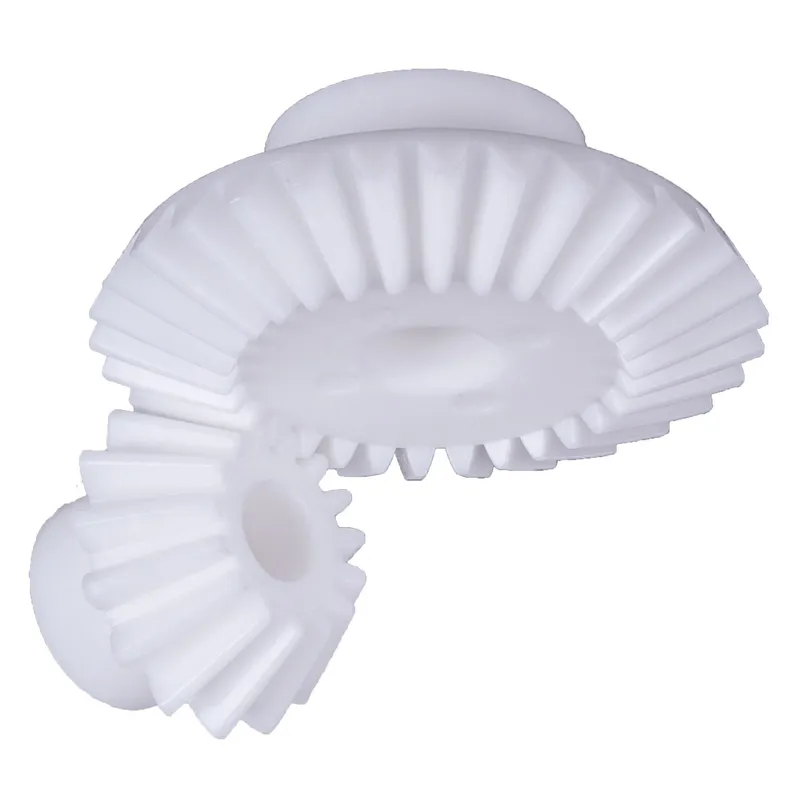
Common Applications of Plastic Bevel Gears
- Robotics and Automation
Plastic bevel gears are widely used in robotics for precise motion control. Their lightweight nature and low friction enable efficient torque transfer in robotic arms and joints. These gears ensure smooth operation in automated systems, enhancing accuracy in tasks like assembly or pick-and-place operations. - Automotive Systems
In automotive applications, bevel gears are employed in components like windshield wiper mechanisms and seat adjusters. Their corrosion resistance and quiet operation make them ideal for interior systems. These gears reduce vehicle weight, improving fuel efficiency while maintaining durability under moderate loads. - Consumer Electronics
Plastic bevel gears are integral to devices like printers, scanners, and cameras. Their low noise and self-lubricating properties ensure smooth, maintenance-free operation. These gears facilitate precise movement in paper feeds or lens adjustments, enhancing device reliability and user experience in compact electronics. - Medical Equipment
In medical devices such as surgical tools or diagnostic machines, straight bevel gears offer biocompatibility and corrosion resistance. Their ability to function without lubrication prevents contamination. These gears enable precise, quiet motion in equipment like infusion pumps or imaging systems, ensuring patient safety and device longevity. - Household Appliances
Plastic bevel gears are used in appliances like blenders, mixers, and washing machines. Their noise reduction and durability make them suitable for high-use environments. These gears handle moderate torque in motor-driven mechanisms, providing reliable performance while keeping production costs low for manufacturers. - Toys and Hobby Models
In toys and remote-controlled models, bevel gears provide lightweight, cost-effective solutions for motion transfer. Their design flexibility allows for intricate mechanisms in drones or toy cars. These gears withstand repeated use, offering durability and smooth operation in recreational products.
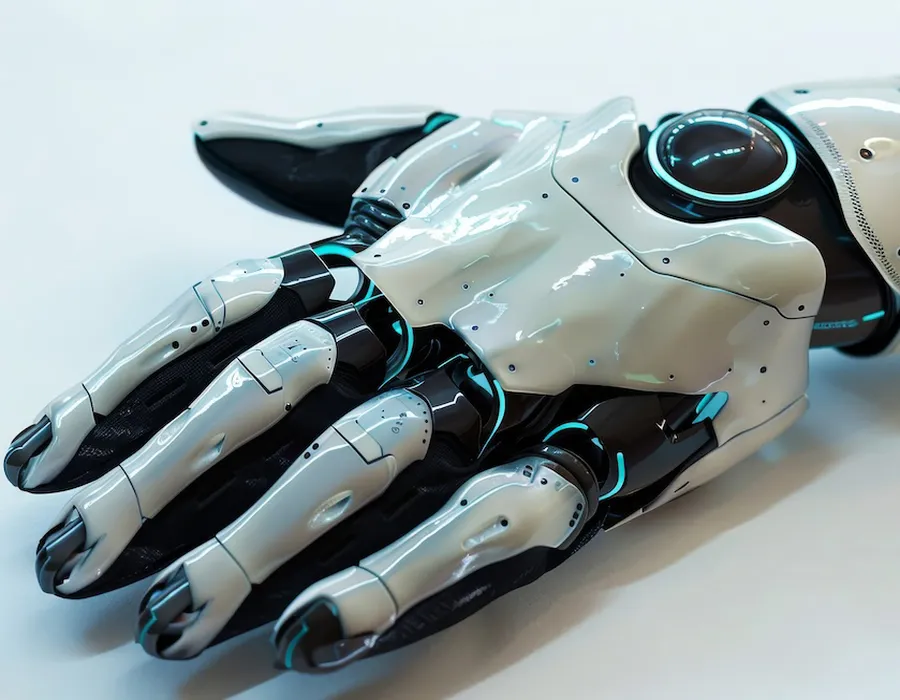 |  |
| Bevel Gear for Robotics and Automation | Bevel Gear for Consumer Electronics |
 | 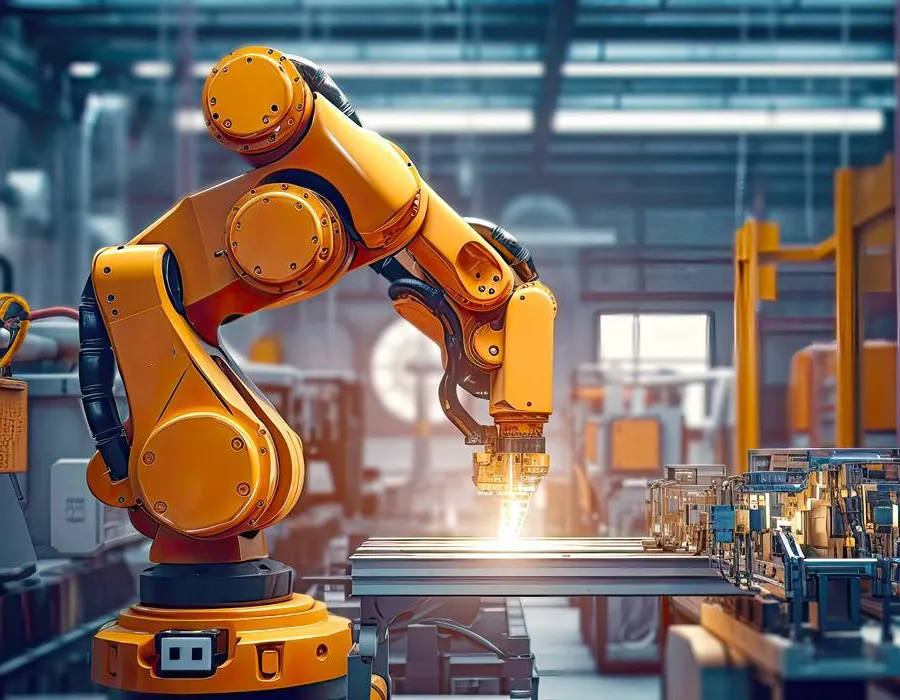 |
| Bevel Gear for Automotive Systems | Bevel Gear for Robotics |
Plastic Straight Bevel Gear Vs Plastic Spiral Bevel Gear
Plastic straight bevel gears and plastic spiral bevel gears serve similar purposes in transmitting power between intersecting shafts, but they differ significantly in design, function, and application.
1. Tooth Design
Plastic straight bevel gears feature straight teeth that are aligned parallel to the gear axis. This simple design allows for easier manufacturing and alignment. Conversely, plastic spiral bevel gears have curved, angled teeth that gradually engage with one another. This spiral design enables a smoother and more efficient transfer of power.
2. Load Capacity and Durability
Spiral bevel gears are better suited for high-load and high-speed applications compared to straight bevel gears. The curved teeth of spiral bevel gears distribute the load more evenly across multiple teeth, reducing stress and wear. Straight bevel gears, on the other hand, are more suitable for light to moderate loads due to their concentrated tooth contact.
3. Noise and Vibration Levels
Straight bevel gears tend to generate more noise and vibration during operation because their teeth engage abruptly. In contrast, spiral bevel gears operate more quietly with minimal vibration, thanks to their gradual tooth engagement.
4. Efficiency and Application
Straight bevel gears are simpler in design and ideal for cost-sensitive or low-speed applications. Spiral bevel gears, while more complex and expensive, are preferred for applications requiring higher efficiency, such as automotive systems and industrial machinery.
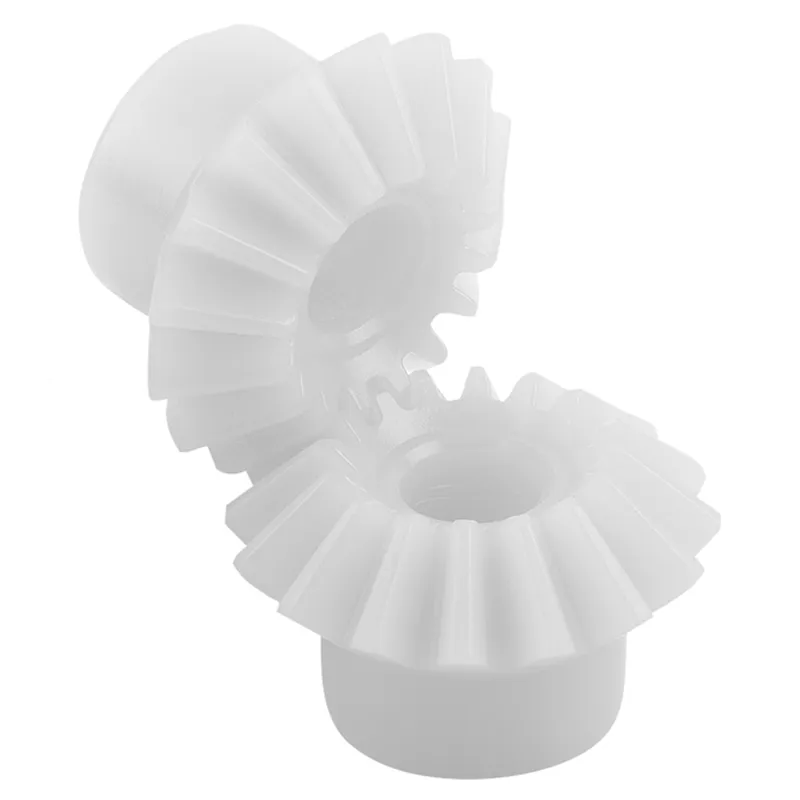 | 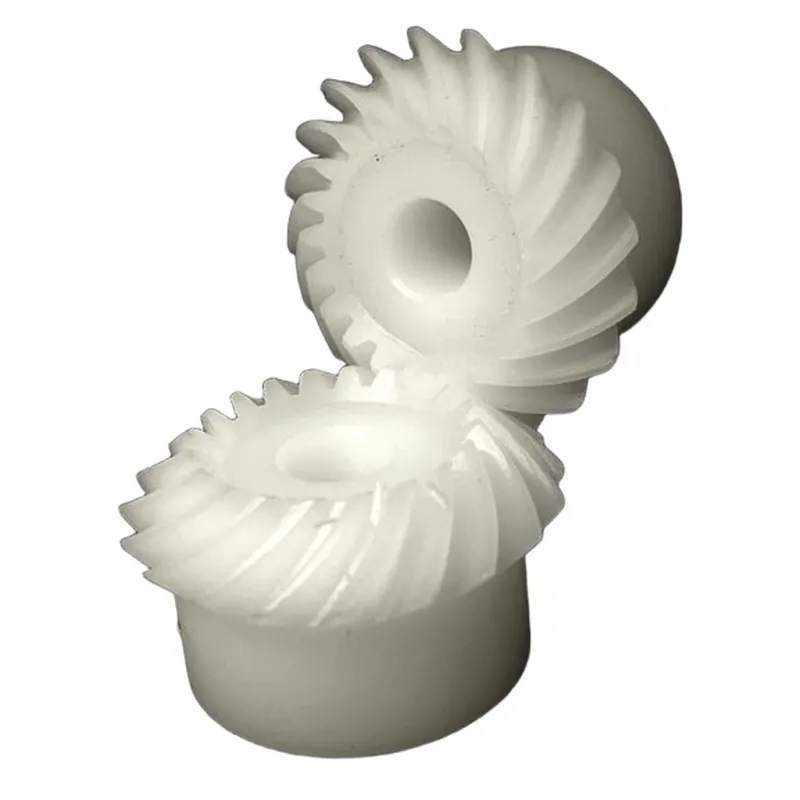 |
| Plastic Straight Bevel Gear | Plastic Spiral Bevel Gear |
Additional information
| Edited by | Yjx |
|---|
